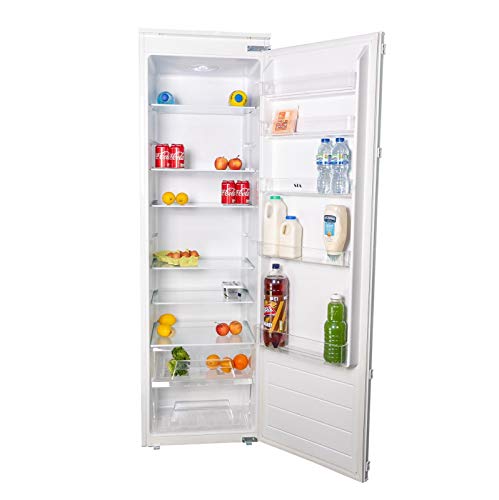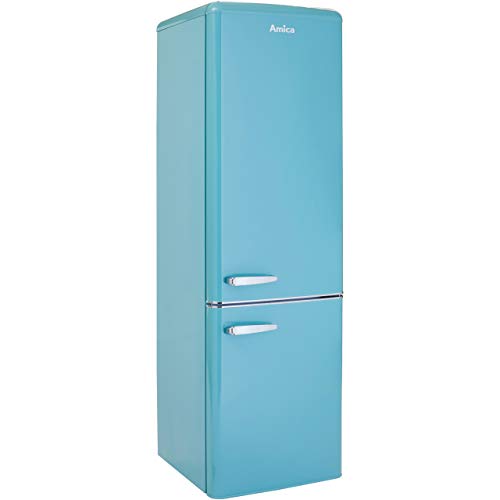Fridge With Ice Maker Tools To Ease Your Daily Life Fridge With Ice Ma…
페이지 정보
작성자Sal 댓글댓글 0건 조회조회 15회 작성일 24-04-29 05:54본문
 Benefits of a Fridge With an Ice Maker
Benefits of a Fridge With an Ice MakerA lot of refrigerators have an ice maker that is built into the door or inside of the freezer, making it simple to pour fresh, cold water. These refrigerators are more expensive, but they save you from having to fill and clean ice trays.
To make Ice, the circuit of the ice maker sends current to a valve for water. The water then flows into the ice mold and is then frozen to form cubes.
Convenience
It is evident that having an ice maker in your refrigerator will help you save time. Instead of having to fill trays manually the ice maker will do this for you. The ice maker is usually activated when sensors detect the level of water inside the freezer. Once it has reached the proper temperature, Fridge With Ice Maker the ice making process starts. A valve opens and fridge with Ice maker a cooling system channels water into molds for ice. A built-in thermometer measures the ice and shuts off the valve when it is frozen.
It's also beneficial when you host guests. You will always have enough to ice, and you will avoid embarrassing situations when guests request more ice, only to find that you're not there. There are refrigerators that have an icemaker with dispensers inside the door. This makes it simple to serve water and access the frozen ice without opening the refrigerator.
Fridges that have ice makers also use less energy than traditional models. The ice-making system uses a small amount of electricity to run, and since they are generally utilized for extended periods of time, this can result in a significant reduction of your energy costs.
If you're looking to save more money, you can choose an option without a cooling tower. Refrigerators that have an ice maker are referred as "direct cool" units, and they make use of the refrigerant already used to cool your refrigerator to make ice. These refrigerators are more energy efficient than traditional ice makers and can reduce your energy consumption by up to 25%. This will save you money on utilities and reduce your carbon footprint.
Efficiency
With an ice maker, you will save time by not needing to fill and freeze ice cubes. These devices also have a constant supply fresh ice that you can scoop into your drink or take out of the refrigerator. These devices are more efficient than refrigerators that require you go into the freezer to find a bag of frozen ice.
The majority of refrigerators with ice makers come as combo models that include an ice maker in the freezer section along with a traditional fridge compartment. There are also standalone refrigerators/freezers with the ice maker built into the door or the back of the freezer.
Typically the ice maker in your fridge for sale near me is powered by the main water supply line. To begin the cycle it is necessary to turn on a timed switch that in the circuit sends a brief amount of electricity through wires that connect to the water valve. The valve is opened which allows water to flow into the molds. The built-in thermometer informs the timed-switch to indicate that the ice-making is complete. This signifies that the ice has been sufficiently chilled to stop the water from flowing into the molds. A motor spins a shaft that has arms that move the ice into the bin that holds the ice.
Some ice machines allow users to choose between two types of ice: standard ice cubes and crushed ice. This is the most suitable option for hot weather if you want to reduce the time required to cool down your drink.
If your ice machine stops producing ice or the resultant ice is small and sloppy, it could be due to the fact that your freezer has been set too low. Check your owner's manual to find the manufacturer-recommended temperature and try setting it higher.
The water fill tubes can be blocked if your ice maker is not producing ice, or produces very little. The ice-making device draws its water from your household's main water supply line, which means these tubes need to be free of obstructions for them to function effectively. These tubes can become blocked as time passes due to mineral deposits dependent on the quality of water in your home. You can often clear these up with a pipe cleaner or by running the water line in your refrigerator through a filter to eliminate minerals.
Water Dispenser
Fridges with ice makers come with a water dispenser that allows you to access chilled, filtered water without opening the refrigerator door. Some models let you add carbon dioxide to make sparkling water or pour hot water into the teapot, coffee maker and more. These models generally cost more than refrigerators that do not have ice makers, and they require a separate water line connection to connect to the water that is melted and transformed into ice to enjoy.
Refrigerators first started offering ice and water dispensers in the 1980s, using simple ice makers with automatic controls that made one block of ice every day. Today, around half of refrigerators have a built-in ice maker and water dispenser.
The dispenser draws cold water from the refrigerator's internal plumbing, transporting it to a tiny water filter that screens out particles and a few basic contaminants. The water is then pumped into an ice mould, which is transformed from a liquid to a solid block of ice. The ice is then stored in an ice bin until it is ready to be released.
When you're ready to drink water, a switch that is timed in the refrigerator's circuit sends a brief electric current through two wires that are connected to the dispenser. This current activates the solenoid, which opens the water valve, letting in just enough water to create an Ice mold. The ice mold is usually an unplastic well that has a series of connected cavities. The valve is closed after the ice is created. This allows the ice to fall from the mold and fall into the bin, where they are waiting to be dispensing.
A little troubleshooting can resolve many issues with refrigerator water dispensers or ice makers. Check out our fridge with ice maker Dispenser Troubleshooting page for more information.
You can also get an alternative to refrigerator ice and water dispensers by using traditional ice cube tray that you can fill up at your kitchen sink. These trays can hold up to 25 cups of ice and offer greater flexibility in deciding the amount of ice you need at any given moment.
Cost
The convenience of a refrigerator with an ice maker comes at an expense. Fridges with an ice maker tend to be more expensive than those without one, because they need to be installed by a professional, connected to a water supply and might require more maintenance or repairs. Also, refrigerators with ice makers use more energy.
Most refrigerators and freezers that have an ice maker can be used to make traditional ice as well as crushed ice. A lot of them also offer a range of sizes and shapes to choose from so you can design your ice according to your preferences.
It's common for people to get used to a specific kind of ice, only to be disappointed when they are unable to find it in the store or restaurant. If you have an icemaker in your under counter integrated fridge you can avoid the problem by setting it up to create your favorite type of ice.
It can be difficult to run low on the ice when you are a frequent drinker, or host large parties. Whether you're sitting alone after a hard workout, relaxing with your spouse after a long day or entertaining friends and family at home, you should be able to drink a cold beverage whenever you'd like.
It's great to know that you can always have ice on hand for any occasion. But if something goes wrong with the appliance, you'll probably require the assistance of an appliance repair pro to fix it.
The cost of a fridge or standalone ice maker repair depends on the issue, model and appliance. Here are a few of the most frequently encountered issues:
 If your fridge has an ice maker that isn't producing ice, it could be due to a blocked supply tube or malfunctioning valve for water inlet. These components are equipped with electrical parts that can be damaged over time, and hiring a professional to repair them can cost anywhere from $150 to $200.
If your fridge has an ice maker that isn't producing ice, it could be due to a blocked supply tube or malfunctioning valve for water inlet. These components are equipped with electrical parts that can be damaged over time, and hiring a professional to repair them can cost anywhere from $150 to $200.댓글목록
등록된 댓글이 없습니다.
